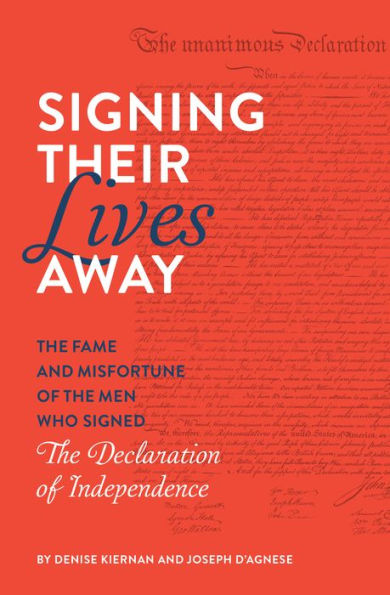Table of Contents
Introduction 9
A Clarification: The Real Independence Day 11
I New Hampshire
Josiah Bartlett: The Signer Immortalized on The West Wing 16
William Whipple: The Signer Who Fought for Freedom-with His Slave 19
Matthew Thornton: The Signer Who Led "The Nation of New Hampshire" 23
II Massachusetts
John Adams: The Signer Everyone Loved to Hate 28
Samuel Adams: The Signer Whose Brewery Went Bust 33
Elbridge Gerry: The Signer Who Gave Us Gerrymandering 38
John Hancock: The Signer Who Signed First 42
Robert Treat Paine: The Signer Who Objected to, Well Everything 47
III Rhode Island
William Ellery: The Signer Who Is Two Degrees from Kevin Bacon 52
Stephen Hopkins: The Signer with the Worst Penmanship 56
IV Connecticut
Samuel Huntington: The Signer Who Became the First U.S. President-Sort Of 61
Roger Sherman: The Signer Who Signed Everything 65
William Williams: The Signer Who Was Certain He Would Hang 69
Oliver Wolcott: The Signer Who Melted King George's Heart (and Then Some) 73
V New York
Philip Livingston: The Prince of New York 78
William Floyd: The Signer Whose Home Was Turned into a Stable 82
Francis Lewis: The Signer Whose Wife Was Imprisoned 86
Lewis Morris: The Signer Buried in One of America's Poorest Neighborhoods 90
VI New Jersey
Abraham Clark: The Signer Whose Sons Were Imprisoned 95
John Hart: The Signer Who Slept in Caves 99
Francis Hopkinson: The Signer Who Designed, the U.S. Flag 103
Richard Stockton: The Only Signer Who Recanted the Declaration 109
John Witherspoon: The Signer Who Was Also a Minister 113
VII Pennsylvania
John Morton: The First Signer to Die 118
Benjamin Franklin: The Signer Known throughout the World 122
James Wilson: The Signer Who Went Broke on Shady Land Deals 131
Robert Morris: The Signer Who Financed the War-and Ended Up in Debtors' Prison 137
George Clymer: The Signer Whose Homes Were Targeted by the British 142
George Ross: The Signer Related to America's Most Famous Seamstress 146
Benjamin Rush: The Signer Who Loved to Gossip About Other Signers 150
George Taylor: The Signer Who Started Out as an Indentured Servant 155
James Smith: The Signer Who Was Coy About His Age 158
VIII Delaware
Caesar Rodney: Delaware's Famous Midnight Rider 163
George Read: The Only Signer Who Voted Against Independence 167
Thomas McKean: The Signer Who Waited Five Years to Sign 171
IX Maryland
Charles Carroll of Carrollton: The Last Signer to Die 177
Samuel Chase: The Signer Better Remembered as "Old Bacon Face" 183
William Paca: The Signer Who Dared to Acknowledge His Illegitimate Child 188
Thomas Stone: The Signer Who Died of a Broken Heart 192
X Virginia
Carter Braxton: The Signer Who Had Eighteen Children 196
Benjamin Harrison: The Signer Who Played Falstaff to Congress 201
Thomas Jefferson: The Signer Who Wrote the Declaration 206
Richard Henry Lee: The Six-Fingered Signer 213
Francis Lightfoot Lee: The Signer Who Lived in His Brother's Shadow 218
Thomas Nelson Jr.: The Signer Who Ordered Troops to Fire on His Own Home 222
George Wythe: The Signer Who Was Poisoned by His Nephew 227
XI North Carolina
Joseph Hewes: The Signer Who Worked Himself to Death 233
William Hooper: The Signer Who Feared Democracy 237
John Penn: The Signer Who Taught Himself How to Read and Write 241
XII South Carolina
Thomas Lynch Jr.: The Signer Buried at the Bottom of the Sea 246
Arthur Middleton: The Signer Also Known as Andrew Marvell 250
Edward Rutledge: The Signer Who Delayed Independence by a Month 254
Thomas Heyward Jr.: The Signer-Songwriter 258
XIII Georgia
Lyman Hall: The Signer Who Dragged Georgia into the Union 263
George Walton; The Signer Who Was Orphaned, Impoverished, Abused, Shot, and Imprisoned 267
Button Gwinnett: The Signer with the $700,000 Autograph 271
Appendixes
Text of the Declaration of Independence 277
Timeline 282
The Miscellany of Independence 285
Selected Bibliography 295
Index 301
Acknowledgments 304



